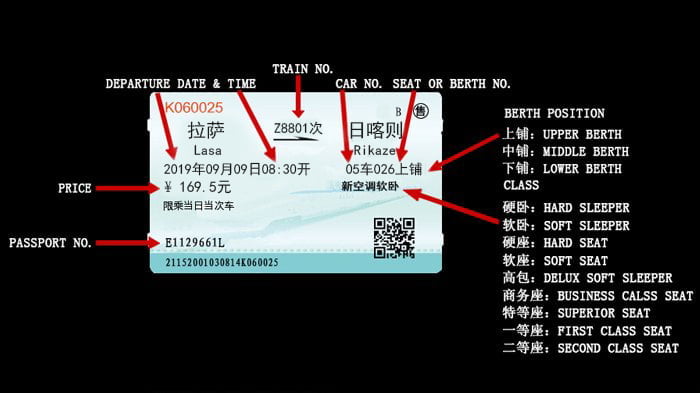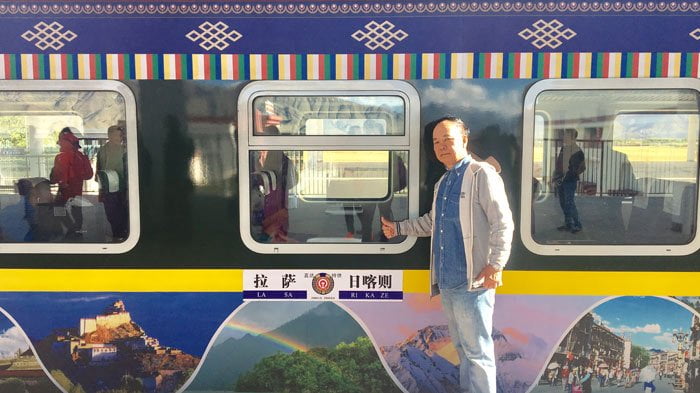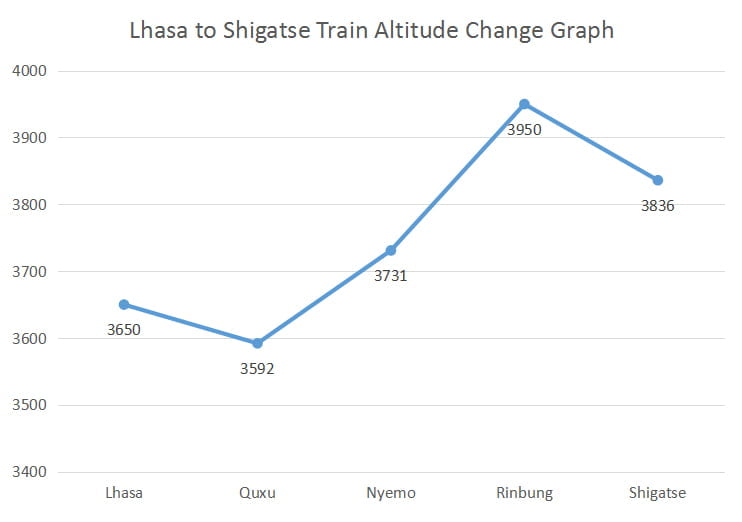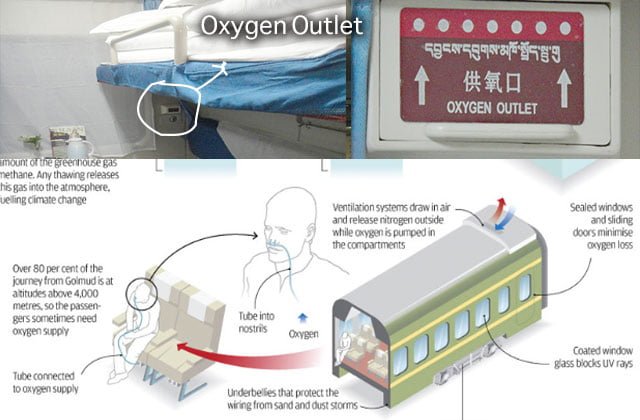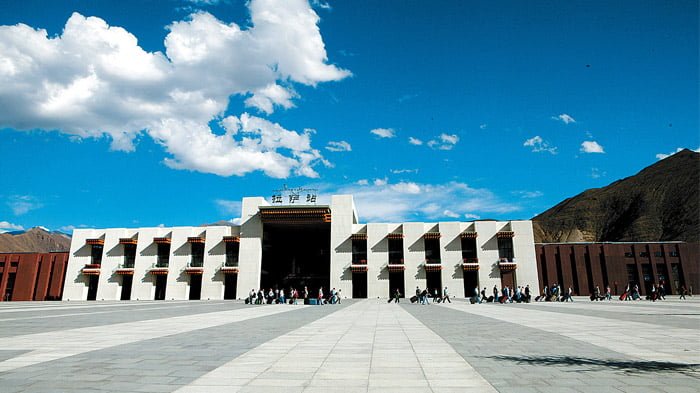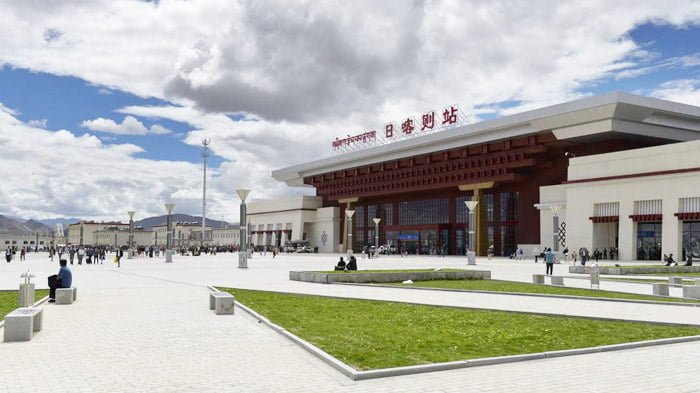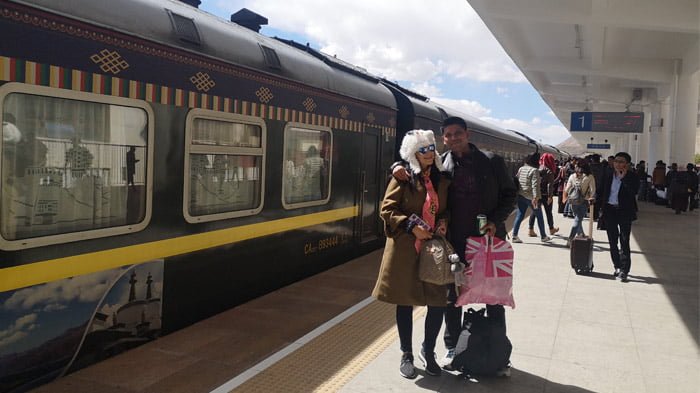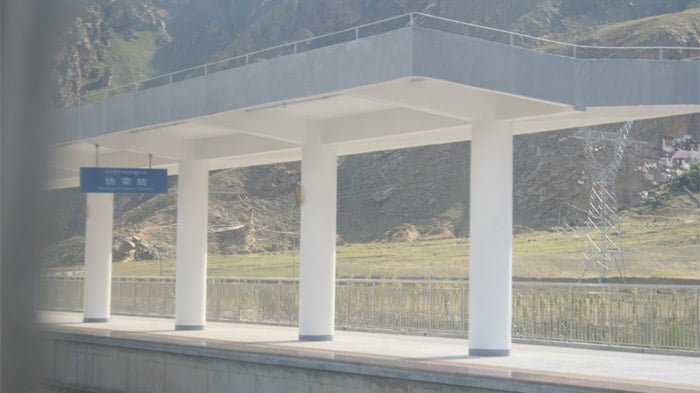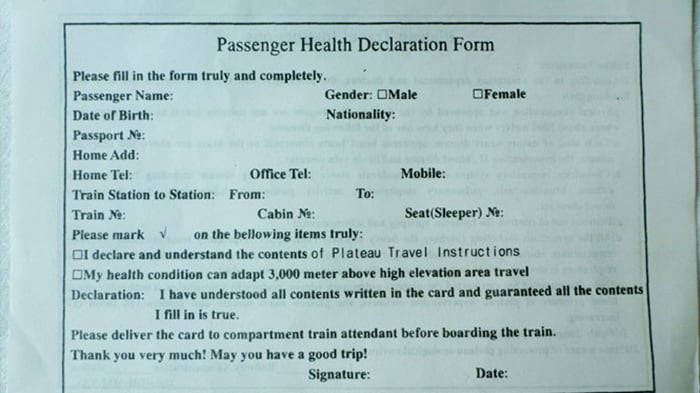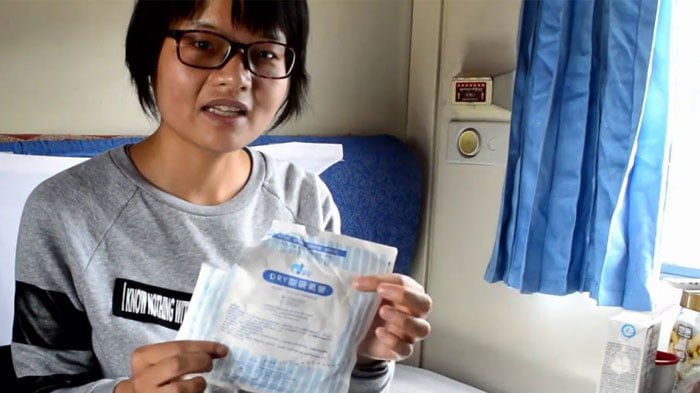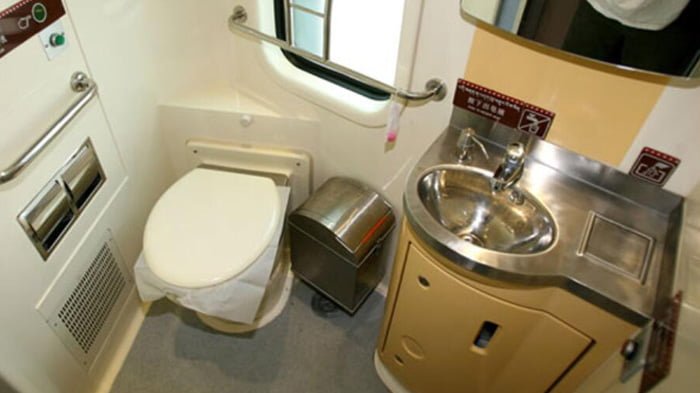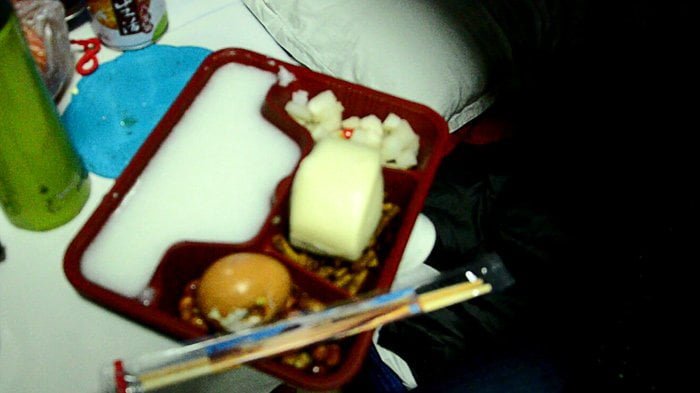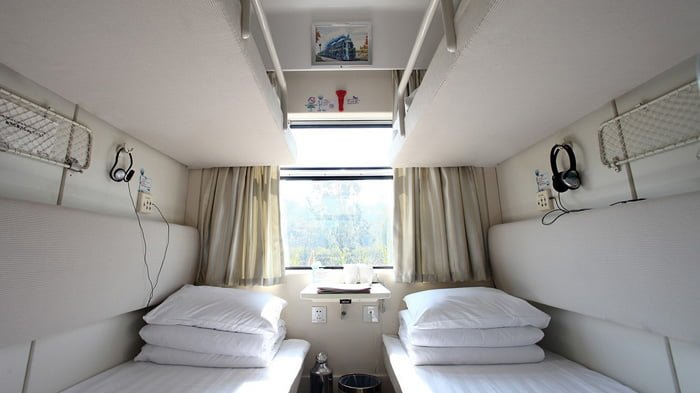After four years of construction, the high-elevation Lhasa – Shigatse Railway was finally open to the public on August 15, 2014. It is an extension line of Qinghai-Tibet Railway with altitudes ranging from 3,600 to 4,000 meters.
Branded as “Tangzhu Ancient Route Train”, Lhasa to Shigatse train (Z8801&Z8803) departs twice a day from Lhasa Railway Station to Shigatse Railway Station, covering 248km within three hours. By the way, Xining to Shigatse train Z6811 would also make a stop at Lhasa Railway Station. Thus, there are three pairs of trains running between Lhasa and Shigatse every day.
More Detailed Information about Lhasa to Shigatse Train
Even now, the overland journey from Lhasa to Shigatse is still the most popular to go to the central Tibet.
However, taking the train from Lhasa to Shigatse offers more convenience for those who are short in time and those who are not first-time travelers to Tibet. It normally takes a day to travel from Lhasa to Shigatse by tour vehicle, with stops at the Yamdrok Lake and Gyantse Kumbum en route. But the train journey from Lhasa to Shigatse only takes about 3 hours. For those who are short in time but still want to see the Mount Everest, or go further to Mount Kailash, and those who have already experienced the epic land journey from Lhasa to Shigatse, it is better to take a train from Lhasa to Shigatse directly, and then transfer to their destinations in further west regions of Tibet from Shigatse.
However, for first-time travelers to Tibet, we do not recommend tourists taking this newly-built train from Lhasa to Shigatse because it would be more rewarding if tourists travel to Shigatse by Lhasa – Gyantse – Shigatse Highway, you can visit Yamdrtso Lake, Karola Glacier, Gyantse Pelkor Monastery, etc. and then return to Lhasa by Shigatse-Lhasa Railway along Yalu Tsangpo River after finishing sightseeing in Shigatse. This loop trip combined with road and railway tour will allow tourists to have both unparalleled land sightseeing and railway experience.
Should I Choose Soft Sleeper, Hard Sleeper or Hard Seat?
There are two major ticket classes of each Lhasa Shigatse train that chosen by most foreign travelers for its comfort, namely, the hard sleeper (¥111.5/ $18) and the soft sleeper (¥169.5/ $27). Each soft sleeping cabin, there are 4 soft berths in total, with a door that can be closed to form a private room. In each hard sleeping compartment, there are 6 hard berths, and there is no door for the cabin.
Since it is a short journey between Lhasa and Shigatse, just around 2 hours, there is one more choice for those budget travelers. The hard seat ticket of Lhasa Shigatse trains is ¥40.5/$7, which is much cheaper than those sleeper tickets. We offer ticket booking and itinerary arrangement service, please feel free to contact us for consultation. We are ready to help you out.
Lhasa to Shigatse Train Schedule and Ticket Price/h4>
Basically speaking, there are 3 trains bound for Shigatse every day. Only 2 trains run directly from Lhasa to Shigatse, i.e. Z8801 and Z8803. And Tibet train Z6811 departing from Xining to Shigatse would also make a brief stop at Lhasa Train Station in the afternoon. (updated on Sept. 6rh, 2019).
Timetable of Lhasa to Shigatse Train – Z8801 & Z8803 & Z6811
| Train Number | Departure | Arrival | Duration | Distance | Frequency | Ticket Price | ||
|---|---|---|---|---|---|---|---|---|
| Z8801 (Lhasa-Shigatse original) | 08:30 | 11:25 | 2:55hrs | 248km | Daily | ¥40.5 Hard seat | ¥111.5 Hard sleeper | ¥169.5 Soft sleeper |
| Z8803 (Lhasa-Shigatse original) | 15:20 | 17:58 | 2:38hrs | 248km | Daily | ¥40.5 Hard seat | ¥111.5 Hard sleeper | ¥169.5 Soft sleeper |
| Z6811 (Xining-Lhasa-Shigatse) | 18:10 | 20:58 | 2:48hrs | 248km | Daily | ¥40.5 Hard seat | ¥111.5 Hard sleeper | ¥169.5 Soft sleeper |
Timetable of Shigatse to Lhasa Train – Z8802 & Z8804 & Z6812
| Train Number | Departure | Arrival | Duration | Distance | Frequency | Ticket Price | ||
|---|---|---|---|---|---|---|---|---|
| Z8802 (Shigatse-Lhasa original) | 12:05 | 14:40 | 2:35hrs | 248km | Daily | ¥40.5 Hard seat | ¥111.5 Hard sleeper | ¥169.5 Soft sleeper |
| Z8804 (Shigatse-Lhasa original) | 18:40 | 21:33 | 2:53hrs | 248km | Daily | ¥40.5 Hard seat | ¥111.5 Hard sleeper | ¥169.5 Soft sleeper |
| Z6812 (Shigatse-Lhasa-Xining) | 14:40 | 18:00 | 3:20hrs | 248km | Daily | ¥40.5 Hard seat | ¥111.5 Hard sleeper | ¥169.5 Soft sleeper |
About ticket price:
The ticket prices above are the net price. In reality, since the demand for Tibet train ticket far exceeds the supply, to successfully book the train ticket for you, an additional service fee is involved. However, we will manage to secure the ticket and ensure you a seamless Tibet train journey.
How to Book and Get Tibet Train Tickets?
1. How to Book Tibet Train Ticket?
Normally, train tickets are booked online or sold at designated train ticket sales offices and train stations nationwide. However, to a foreign tourist, it is highly recommended to look for help from a reliable travel agency to book your train ticket. Not only does it help you avoid many annoying and intricate procedures but the travel agency can successfully apply for the Tibet Travel Permit for you as the government mandates that foreign should travel in Tibet with the Tibet Travel Permit and the company of a local tour guide.
2. How to Get the Tibet Train Ticket?
In China, you need the paper train tickets to get into your train. If you book train tickets with us, you have two ways to get your paper tickets:
1. We deliver the paper tickets to your hotel or address in Lhasa (Recommended)
2. Collect them at the railway station
If you choose the delivery service, it is advisable to inform us 4 business days before departure. If you choose to collect them at the railway station, make sure to bring the confirmation number of train tickets, your Tibet Travel Permit as well as your valid and original passport. The confirmation number will be sent to you along with related train information once the tickets are confirmed, present it and the mentioned documents to the staff behind ticket windows to get paper tickets for free.
Lhasa Railway Station operates 24/7, but usually there are only a few ticket windows available after 11 p.m. Considering the long queues in front of the ticket window and the language barrier, it is advisable to arrive at the train station at least 2 hours before departure if you collect tickets on the same day.
Notice: Tibet Travel Permit is needed for collecting the Tibet train ticket.
3. How to Read the Train Ticket
Here are some useful phrases you may need to read Z8801 Lhasa to Shigatse Train ticket:
拉萨站: Lhasa Railway Station
日喀则站:Shigatse Railway Station
xx年xx月xx日: xx Year xx Month xx Date
xx车xx号: xx Carriage xx Berth
上/ 中/ 下铺:Upper/ Middle/ Lower Berth
Information guide on Lhasa to Shigatse Train Ticket
How to Board the Train?
Below are the steps to board a train in China:
Step1: Fill in the Health History Form
Before boarding the train, tourists are expected to fill out an health history form. If one has illness such as hypertension, stroke, chronic respiratory problem, and other cardiovascular disease, he or she shall no board the train for one’s health concern.
Step2: Pass Security Check
After your arriving at the right railway station, line up for the security check to enter into waiting hall: present your passport, Tibet Travel Permit and train ticket to the staff, put all your luggage such backpacks, carry-on bags on the security scanner conveyor belt, and walk through a detector gate and wait for staff to use a scanner on you to check forbidden articles.
Notice: Tourists should put your luggage to the X-Ray scanner and things like gun, poison, explosive, and chemical substance, etc are strictly forbidden.
Step3: Find the Waiting Room
Once enter into the waiting hall of Lhasa Railway Station, you can find an LED screen showing Train Number (车次), Terminal (终到站), Departing Time (开点) and Waiting Room (候车室). Get your waiting room information and wait for check-in there. Train number Z8801/8803 is well marked in the correct waiting room.
Step4: Board the Train
Usually check-in starts 15-30 minutes before departure and barriers close 5 minutes before departure. After check-in, you can find Led screen hang on the way to the train telling your platform (站台) and direction of your carriage (车厢). Follow the instruction and the staff waiting at the carriage gate will check your ticket again to make sure you board the right carriage of the right train.
Boarding Lhasa-Shigatse Train
Step5: Find Your Berth
After getting on the train, you can find your berth according to your ticket. Put your baggage on the rack overhead or under the lower berth. Your sleeper ticket will be exchanged for a plastic berth card by staff shortly after boarding. Staff will return your ticket and get back the berth card about half an hour before arriving at your destination.
FAQs:
Q1. Is it necessary to carry Tibet Travel Permit all the time?
Make sure you have your passport, Tibet Travel Permit and ticket with you as you could be checked many times during the long journey. It is also advisable to have many copies of Tibet Travel Permit.
Q2. Is it possible to swap ticket with other people to stay with friends or family in the same cabin?
Yes. It is acceptable. You may ask conductor to swap tickets with other passengers to stay with your family or friends. Do remember your cabin and seat No.
Q3. Is It Safe on the Tibet Train?
Having a ride on Qinghai-Tibet train is relatively safe as each compartment is independent and its door will automatically be closed at night. One is forbidden to enter the compartment without ticket. Of course, nowhere is safer than the compartments of soft sleeper. The cabin of soft sleeper can accommodate 4 travellers and there is a door to shut, which is the perfect choice for a family. Besides, the surveillance cameras and 24-hours police patrol make it even safer on the train.
Life Onboard
Having a ride on Qinghai-Tibet train like Lhasa-Shigatse route is definitely the experience of a lifetime. Besides, the long distance and pressurized train tailor-made for acclimatization of extreme altitude make the ride different from other train journey. Following tips are suggested for tourists to better enjoy the life on Lhasa-Shigatse train.
1. Food and Drinks
Before the departure from Lhasa Railway Station, do bring enough food. It could be snacks, fruit and instant noodles wrapped in bowls. Sharing snack with roommates is the easiest way to break the silence.
Dozens of tourists are having dinner in the dinning car. Tourists can order some traditional Chinese home-made dishes.
You can get 3 meals and drinks from the dining carriage located in the middle of the train. Usually only Chinese food such as noodles, dishes and soups is available and it costs about 20 CNY/meal and accepts cash payment, Wechat payment and Alipay.
The trolleys loaded with food are served in each compartment sporadically and tourists can buy from the staff of train. Besides, tourists can get free boiled water from hot water dispenser near the sinks.
2. Facilities on the Train
To serve the local economy and enhance the brand influence and social awareness of the Lhasa-Shigatse Railway, the Qinghai-Tibet Railway Company cooperated with the Tibet Autonomous Region Government, the Autonomous Region Development and Reform Commission and the Autonomous Region Tourism Development Commission, and jointly titled Lhasa to Shigatse Train Z8801/8802/8803/8804 as Tangzhu Ancient Route Train.
Featured with Tibetan natural scenery pictures, exotic ornaments, traditional cuisine, Lhasa to Shigatse train has perfectly integrated the ancient history and stunning landscape of the Tang Dynasty ancient roads, and unique Tibetan customs into the train service.
Our client were singing on Tangzhu Ancient Route Train
At the same time, the train also has the modern cultural characteristics. The special dining bar have incorporated modern bars, cafes, concert halls,etc., which is named as “Mobile Langma Hall“. It has set up a reading corner with the best-selling novels and cultural tourism propaganda books, providing readers with reading space and personalized services to ease the fatigue caused by high-altitude travel. In non-meal time, the dining car also offers ethnic dancing and singing service and let passengers enjoy the special one-stop service of “dining + entertainment + culture”.
The train also has a baby care room with maternal and infant supplies, providing independent space for mothers and babies; a health room with electronic sphygmomanometer, oximeter, electronic thermometer and other facilities, carrying out basic physical examinations for the passengers; the hard-seat compartments are equipped with warm blankets, U-shaped travel pillows, sewing kit, reading glasses and other small items, etc. Trying to fully meet the needs of all levels of passenger service, Tangzhu Ancient Route Train aims to let each passenger experience a happy, cozy, cultural journey on the rail.
3. Altitude Change of Lhasa to Shigatse Train
Xining to Lhasa to Shigatse Railway, measuring 248km, starts from Lhasa (3,650m) to Shigatse (3,836m). As the Tangzhu Ancient Route Train heads west, you can feel the altitude increasing little by little and pass through Tibetan villages like Quxu (3,592 m), Nyemo (3,731 m), Rinbung (3,950 m) and finally arrive at Shigatse (3,836 m).
This graph gives you a rough idea of how altitude changes along Lhasa-Shigatse railway line
4. Altitude Sickness and Oxygen Supply
Sometimes called “mountain sickness”, altitude sickness is a group of symptoms that can strike if you walk or climb to a higher altitude too quickly. Characterized by symptoms such as headache, dizziness, fatigue,nausea, altitude sickness is the biggest concern for travelling to Tibet.
However, there is no need to be panic about altitude sickness. To better adapt to high altitude, Lhasa-Shigatse Train is tightly sealed and pressurized like an airplane. Therefore, smoking is not allowed. There are two sets of oxygen supply on the train: the dispersion-mode oxygen supply system operated by the train staff and the distribution-mode oxygen supply that can be connected to individual passenger through an independent port via a disposable pipe distributed by train staff. You can find the oxygen supply port in your compartment and along the aisle of each carriage.
An illustration of how to use oxygen outlet on Qinghai-Tibet train
The oxygen is automatically pumped into the train and tourists can also manually use the oxygen outlet to minimize altitude sickness symptoms such as headache, dizziness, fatigue,nausea,etc. It is advisable to bring altitude sickness medicines to ease the discomfort.
You can drink lots of water, eat light food and take a good rest to prevent high altitude sickness. It is advisable to consult the doctor for altitude sickness medicines weeks pior to the trip.
FAQs:
Q1. How to Get Help on the Train?
Some of the staff on the train speak English and they are easy-approaching and hospitable to foreign tourists. If one runs into any trouble, you may ask the head of conductor for help. Most of the passengers may have symptoms of altitude sickness (such as headache, fatigue, difficult sleeping, lack of appetite, etc.) as the train reaches Qinghai-Tibet plateau. Now, you may switch on the oxygen outlet to inhale oxygen to ease the discomfort. If the symptom gets worse, you may find the conductor for help and the doctor on the train will come and give you timely treatment.
Q2. How can we minimize the effect of altitude sickness?
The effect of altitude sickness on passengers varies. Yet, to minimize or ease the impact of altitude sickness, one may prepare some altitude sickness tablets before boarding the train and take some when the train climbs to plateau. There is no need to worry too much the altitude sickness, the train is built with oxygen supply system which is easy to use.
Q3. Is smoking allowed in the cabin?
Smoking is strictly forbidden in the train as the train is tightly sealed and pressurized and oxygen is pumped into the carriage when the train ascends to extreme altitude.It would be devastating if the train caught fire.
5. Views along Lhasa-Shigatse Railway
Lhasa-Shigatse train, the extended railway line of Qinghai-Tibet Railway, takes on an utterly different picture from the scenery of Qinghai-Tibet railway. Here are the top things to see during the Lhasa Shigatse train journey.
Lhasa Railway Station
When you take a Lhasa Shigatse train, the Lhasa Railway Station itself could be the first attraction of this highland train journey. Situated at an altitude of 3600m, Lhasa railway station was the largest railway station along the Qinghai-Tibet railway line, covering an area of 22 thousand square meters. The successful completion of Lhasa railway station signaled that the overland bridge between Tibet andmainland China officially took shape, a vital passage to the economic prosperity and cultural exchange of Tibet.
Lhasa Railway Station
Yarlung Tsangpo River Valley
The train runs through the valley of Yarlung Tsangpo River that stretches as far as 90 miles, which brings the magnificent view of Yarlung Tsangpo River within your sight. Outside the window, the endless mountain ranges and the rushing Yarlung Tsangpo River, with fields at the river side form a special picture of one of the richest land of Tibet. In spring and summer, the crystal clear river reflects the green trees by the river, and everything looks so full of life. In the fall, the leaves and the straw in the Tibetan barley fields have turned golden, and the Yarlung Tsangpo Valley is filled with the joy of harvest and the warmth of satisfaction.
The Local Tibetans’ Life along the Railway
Not only the natural beauty you will see on the Lhasa Shigatse train, but also the real life of the local Tibetans living in the surrounding villages you can see on the train. You may see the local peasants sow the seeds of Tibetan barley in spring and work hard to harvest barley from the field in autumn. The pastoral and farming scene along the railway line is another picturesque sight one couldn’t afford to miss. And the local villages, the typical Tibetan houses, the cars and vans running through the highway at the side of the railway…all show you how the real life of the local Tibetan is.
How to Get to the Train Stations?
Lhasa Railway Station
Lhasa Railway Station is the terminal of the Qinghai-Tibet Railway and serves as the central hub and biggest train station in Tibet for its huge transport capacity. Situated in Liuwu New Area of southwest Lhasa at an altitude of 3,641 meters, it is only 8 kilometers to downtown Lhasa, 20 kilometers to southwest of the Potala Palace. After touring in Lhasa, our local Tibetan tour guide will escort you to Lhasa Railway Station and board the train to Shigatse.
Shigatse Railway Station
Shigatse Railway Station (Rikaze Railway Station) is the terminal station of Xining-Shigatse Train. Situated in Zhandui Village of Jiacuoxiong Township, Shigatse Railway Station is about 5km away from Shigatse downtown, 9km away from Tashilhunpo Monastery, and 248km away from Lhasa Railway Station. It has a two-story building and can be able to hold 300 people at the same time.
Shigatse Railway Station
Since international tourists cannot travel Tibet alone, Tibet Vista promise you a timely pick-up service at Shigatse Railway Station. Just tell us your travel plan and date, all the rest will be taken good care of.
How to Plan Lhasa Shigatse Train Tour?
If you are interested in a Lhasa Shigatse tour by train, you need to know how to arrange the trips in Lhasa and Shigatse together with the train journey. Here is the guideline to arrange a Lhasa Shigatse train tour with different days.
Option1: One Day Lhasa Shigatse Tashilhunpo Train Trip
You can take the morning train from Lhasa to Shigatse at 8:30, which arrives in Shigatse at 11:25. Then you can visit Tashilhunpo Monastery after lunch. Generally, it takes one or two hours to visit the monastery. After visiting Tashilhunpo Monastery, you can get to Shigatse Railway Station and take the train back to Lhasa at 18:40.
Option2: Two Days Lhasa Shigatse Tashilhunpo Sakya Train Trip
For those who are keen on Tibetan culture and religion, it is suggested to stay two nights in Shigatse to visit both Tashilhunpo Monastery and Sakya Monastery.
You can take the morning train from Lhasa to Shigatse and visit the Tashilhunpo Monastery in the afternoon. The rest of the day is free for you to explore the second largest city in Tibet. On the next day, you can take a car to Sakya Monastery, which is 152.4 km away from downtown Shigatse. After the tour in Sakya Monastery, you go back to Shigatse Railway Station and take the train back to Lhasa at 18:40.
Option3: Two Days Lhasa Shigatse Everest Sakya Tashilhunpo Train Trip
The most popular tour in Shigatse is the trip to Everest Base Camp. Usually, it takes 2 days to complete the Shigatse and Everest Base Camp round trip. On the first day morning, you take the early train from Lhasa to Shigatse, which arrives in Shigatse at 11:25. After lunch, you need to take a car to Everest Base Camp, which is 344 km away from downtown Shigatse. The highlights of the journey are to enjoy the sunset and sunrise from the world’s highest peak at the Base Camp. On the second day, you can visit the base camp and the Rongbuk Monastery nearby. Then you can get back to Shigatse and visit Sakya Monastery en route. If time permits, you can also visit the famous Tashilhunpo Monastery. Then take the train at 18:40 from Shigatse Railway Station and go back to Lhasa.
Here You Can Follow Tibet Vista to Preview Lhasa-Shigatse Railway Journey
If you are planning your trip to Shigatse from Lhasa by train or have any question about the traveling to Tibet by train, please feel free to contact us for Tibet train travel consultation. We are ready to help you out.

